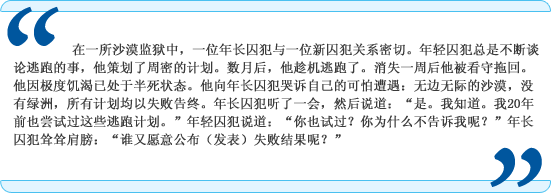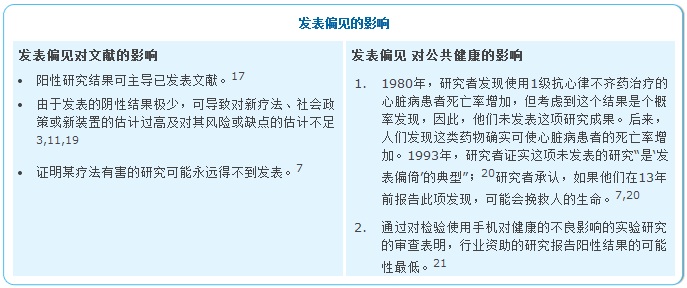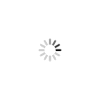- 文章
- 熱門
出版和報告偏見如何影響論文發表


這則趣事恰如其分的詮釋了危害科技文獻的一個問題 – 發表偏見或報告偏見。1?
?
發表偏見是指科技報告中的一種現象,即“陽性”結果(即具有顯著意義的發現)的研究比“陰性”(即支持無效假定或不支持結果)的研究被發表的機會更大。2發表偏見的結果是,即使是被重要的陰性結果(如:證明某項新療法無效的研究)也可能永遠無法為科技界所了解。3
?
這種傾向發表陽性結果的偏見只是眾多發表偏見類型的一種。由于這些偏見影響文章是否被接收發表,因此了解以下方面的內容非常重要
- 導致這些偏見的原因是什么
- 各類偏見及其解決方法
- 為什么要反對發表和報告偏見
?
偏見原因
?
導致報告和發表偏見的因素很多,主要原因有:
- 許多研究未能發表,其原因是研究者未提交需發表的論文。他們認為自己不能報告陽性或有意義的結果,期刊將會拒絕這樣的論文。這種與投稿相關的偏見稱為抽屜問題。4
- 期刊可能更偏向于陽性結果,因為陰性結果被引用的機會相對較低,從而會降低期刊的影響因子。
- 研究贊助者或資助單位可能偏向于符合自己利益的結果;據發現,贊助者可能會阻止不利結果的發表,行業資助的研究產生陽性結果的機會要遠遠超過由獨立機構資助或從事的研究。5,6
各種偏見及其解決方法
?
科技文獻中存在的各種發表和報告偏見如下表所示。1,7-11下表還提供了一些解決各類偏見的建議。在給期刊編輯的投稿信中,在陳述研究重要性時,應盡可能直接解決這些偏見。
| 偏見類型 | 定義 | 解決方法 |
|---|---|---|
| 發表偏見 | 陽性結果的研究比陰性結果的研究發表的機會更大。 | 陳述自己的研究結果要解決的具體問題。明確指出自己的陰性結果可幫助解決發表偏見12(事實上,現在某些期刊專門發表陰性結果13)并指出自己的研究可潛在改變的結果或觀點。 |
| 時滯偏見 | 陽性結果的研究比陰性結果的研究發表更迅速。 | 陳述你認為自己的研究應該立即被期刊發表的原因(例如:因為研究結果可導致進一步試驗的中止或可影響正在實踐中進行工作)。 |
| 重復發表偏見 | 一組陽性或支持結果比一組陰性或不支持結果更容易導致重復發表。 | 如果你已經發表了一篇論述某組陽性結果的論文,不得再使用同組結果進行另一篇論文發表(除非你能提供完全不同的觀點或分析;必須交叉引用第一篇已發表論文)。 |
| 定位偏見 | 報告陽性結果的研究比陰性結果的研究在發行量大及影響力高的期刊上發表的機會更大。 | 首先,必須向具有高影響因子的期刊投稿。研究者發現,偏見的一個主要原因是作者將陰性結果提交給具有低影響因子的期刊,不一定是因為期刊可能會拒絕這些研究。14,15其次,當向具有高影響因子的期刊投稿時,應說明自己的論文如何適合期刊的發表范圍和目標讀者、為什么陰性結果很重要、自己的研究結果如何挑戰原有的知識以及你的研究被廣大讀者所了解的重要性。 |
| 引文偏見 | 相較陰性研究結果,研究者更偏向于引用陽性研究結果。 | 如果你找到了與自己的研究相關的陰性結果,必須將其納入到論文中。不能只引用支持自己研究結果的研究,這樣會使同行評審懷疑存在偏見。 |
| 語言偏見 | 研究論文發表所用語言取決于研究具有陽性還是陰性結果;陽性結果的論文在英文期刊上發表的機會更大。 | 陳述自己的研究結果與全球讀者的相關性,從而應在可影響這類讀者的國際期刊上發表的原因。 |
| 結果報告偏見 | 如果研究者在某項研究者獲得多個測量結果,則其報告陽性結果的可能性要高于陰性結果。? | 報告所有與你的研究相關的結果,無論是陽性還是陰性結果。 |
| 確認偏見 | 符合某個人(如:同行評審或期刊編輯)的觀點和設想的研究成果被推薦發表或發表的機會更大。 | 將你的研究與以前在期刊上發表的研究連結起來。說明你的研究結果可能與以前/廣泛接受的觀點相悖。突出強調你的研究結果如何解決某問題或改變原有觀點。 |
| 贊助偏見Funding bias | 研究結論偏向于有利贊助者產品;違背研究贊助者利益的研究成果不可能付印發表。 | 為了確保你的贊助者不會影響你的研究結論,你應該收集所有的研究數據,應獨立地分析數據和選擇研究方法,并掌握撰寫和提交論文的最終決定權。16必須公布資助來源和所有的利益沖突。公布所有資助來源的論文稿比未公布者發表的機會更大。11 |
| ? |
|---|
為什么應該堅決反對偏見
?
發表與報告偏見與研究的目的背道而馳。這些偏見通過突出陽性結果的發表,已形成了“一個系統化非代表性”文獻主體17并“導致科學誠信受到危害”。18
?
這將導致不良后果,例如:無效或危險的療法、延長患者的痛苦及浪費資源(參見文本框:“發表偏見的影響”)。
?
反對“發表與報告偏見”將有助于維護科技文獻的科學性。具體做法包括:提交未產生預期結果但所用方法完善的研究;提倡既要發表陰性結果也要發表陽性結果;客觀無偏見地進行同行評審;拒絕資助機構影響研究方法、結果報告或發表決定。
?
通過共同努力,我們將會保證發表的研究成果在所有已完成的研究中更具代表性,并有助于維護科技文獻的科學性。

參考文獻
- Sterne JAC, Egger M, Moher D. (Editors) (2008). Chapter 10: Addressing reporting biases in?Cochrane Handbook for Systematic Reviews of Interventions?(eds. JPT Higgins and S Green). Version 5.0.1 [updated September 2008]. The Cochrane Collaboration.
- Dickersin K (1990).?The existence of publication bias and risk factors for its occurrence.?Journal of the American Medical Association, 263: 1385–1389.
- McGauran N, et al. (2010).?Reporting bias in medical research—a narrative review.?Trials, 11: 37.
- Rosenthal R (1979).?The "file drawer problem" and tolerance for null results.?Psychological Bulletin, 86(3): 638–641. doi: 10.1037/0033-2909.86.3.638.
- Bodenheimer T (2000).?Uneasy alliance—clinical investigators and the pharmaceutical industry.?New England Journal of Medicine, 342: 1539–1544.
- Bekelman JE, Li Y, Gross CP (2003).?Scope and impact of financial conflicts of interest in biomedical research.?Journal of the American Medical Association, 289(4): 454–465.
- Song F, Parekh S, Hooper L, Loke YK, Ryder J, Sutton AJ, et al (2010).?Dissemination and publication of research findings: An updated review of related biases.?Health Technology Assessment, 14(8): iii,ix–xi.
- Mahoney MJ (1977).?Publication prejudices: An experimental study of confirmatory bias in the peer review system. Cognitive Therapy and Research, 1(2): 161–175. doi: 10.1007/BF01173636.
- Chopra SS (2003).?Industry funding of clinical trials: Benefit or bias??Journal of the American Medical Association, 290(1): 113–114.
- Lesser LI, Ebbeling CB, Goozner M, Wypij D, Ludwig DS (2007).?Relationship between funding source and conclusion among nutrition-related scientific articles.?PLoS Medicine, 4(1): e5.
- Lee KP, Boyd EA, Holroyd-Leduc JM, Bacchetti P, Bero LA (2006).?Predictors of publication: Characteristics of submitted manuscripts associated with acceptance at major biomedical journals.?Medical Journal of Australia, 184: 621–626.
- Sridharan L & Greenland P (2009).?Editorial policies and publication bias: The importance of negative studies (editorial commentary).?Archives of Internal Medicine, 169: 1022–1023.
- Kotze JD, Johnson CA, O’Hara RB, Veps?l?inen K, Fowler MS (2004).?Editorial.?Journal of Negative Results—Ecology & Evolutionary Biology, 1: 1–5.
- Koricheva J (2003).?Non-significant results in ecology: A burden or a blessing in disguise??Oikos, 102: 397–401.
- Leimu R & Koricheva J (2004).?Cumulative meta-analysis: A new tool for detection of temporal trends and publication bias in ecology.?Proceedings of the Royal Society of London, B271: 1961–1966.
- International Committee of Medical Journal Editors. Uniform requirements for manuscripts submitted to biomedical journals: Writing and editing for biomedical publication [Accessed: June 14, 2011] Available from:?http://www.ICMJE.org.
- Rothstein HR, Sutton AJ, Borenstein M. (Editors) (2005). Chapter 1: Publication Bias in?Meta-Analysis in Publication Bias in Meta-Analysis: Prevention, Assessment and Adjustments?(eds. HR Rothstein, AJ Sutton, and M Borenstein). John Wiley & Sons Ltd.: Chichester, UK.
- Editorial.?The whole truth.?New Scientist. May 1, 2004. Magazine issue 2445.
- Scholey JM & Harrison JE (2003).?Publication bias: Raising awareness of a potential problem in dental research.?British Dental Journal, 194: 235–237.
- Editorial: Dealing with biased reporting of the available evidence. The James Lind Library. [Accessed: June 14, 2011] Available from:?www.jameslindlibrary.org.
- Huss A, Egger M, Hug K, Huwiler-Müntener K, R??sli M (2007).?Source of funding and results of studies of health effects of mobile phone use: Systematic review of experimental studies.?Environmental Health Perspectives, 115: 1–4.






